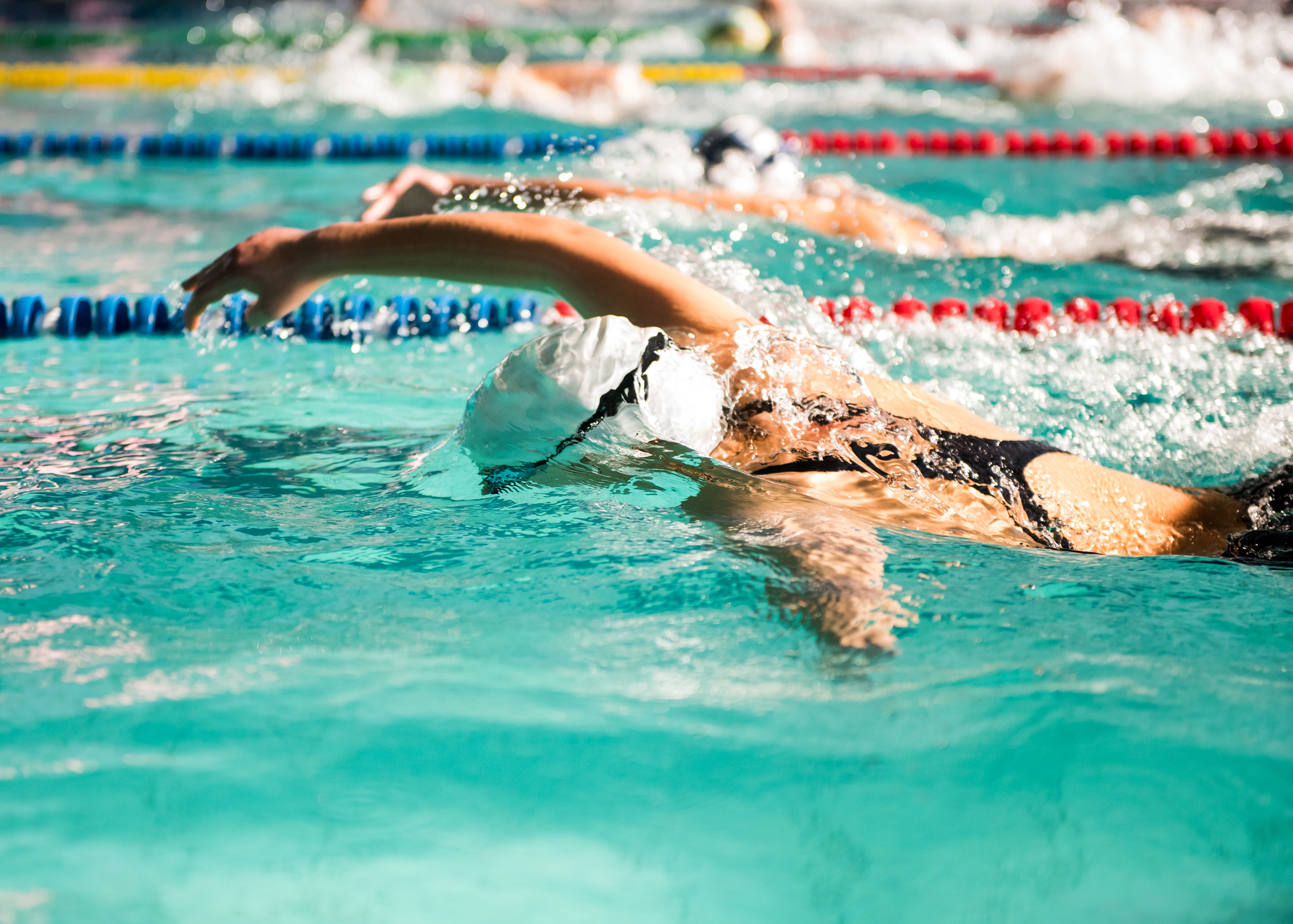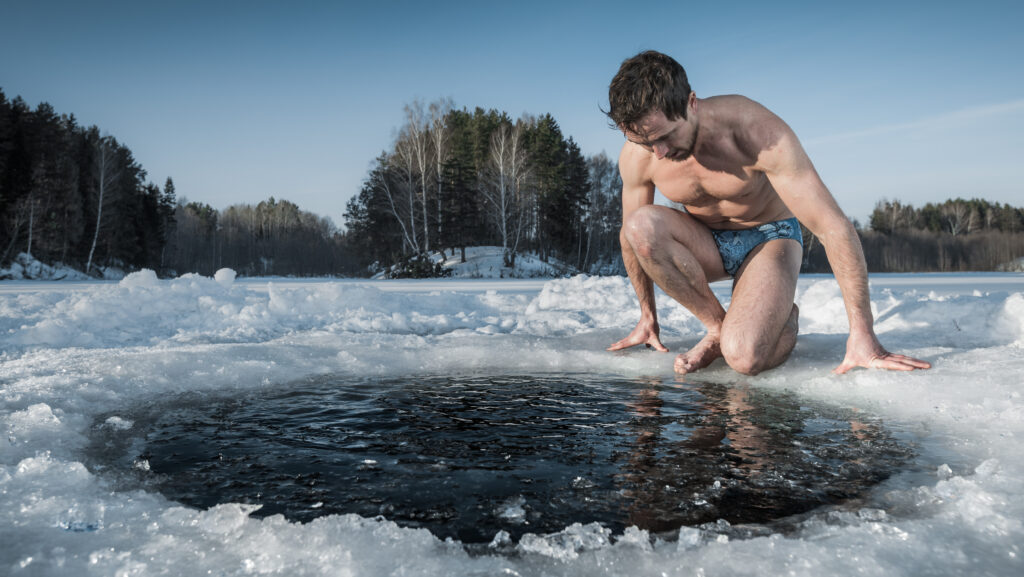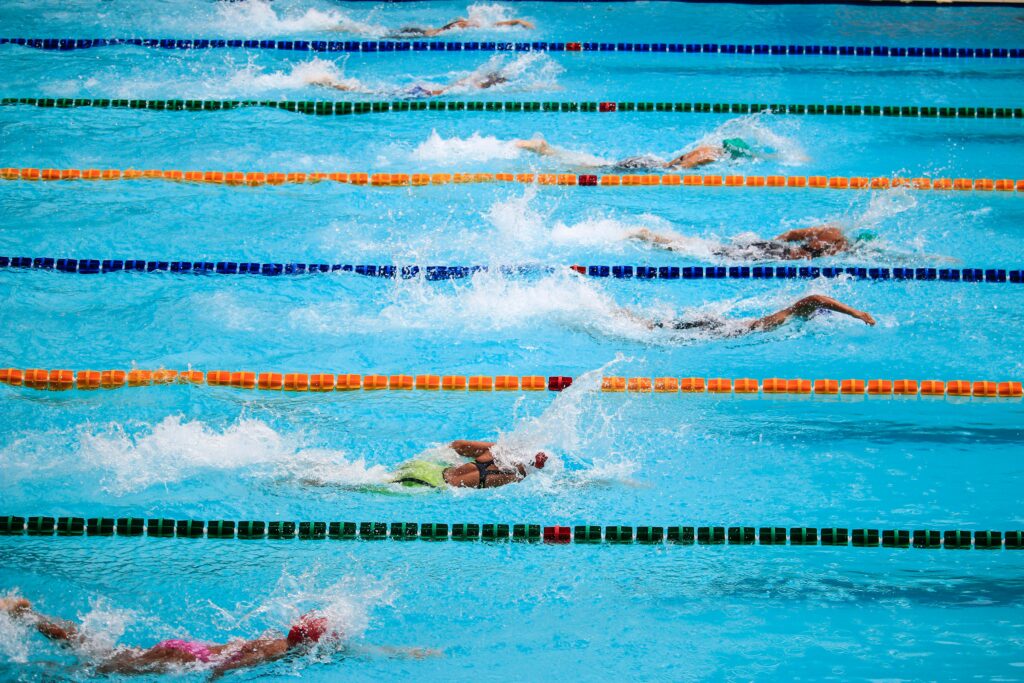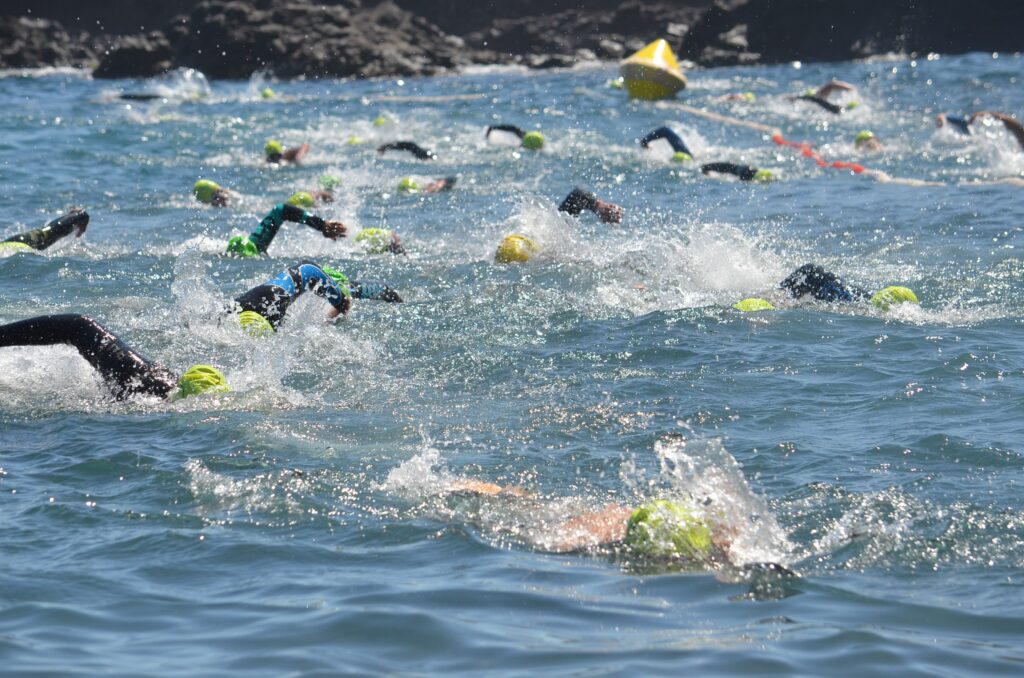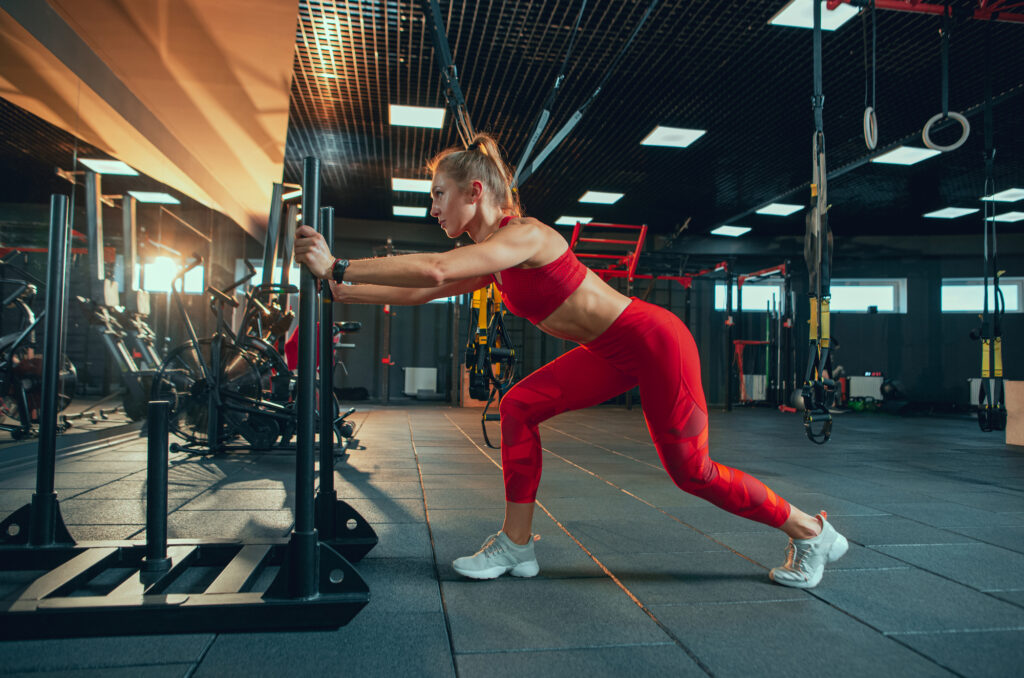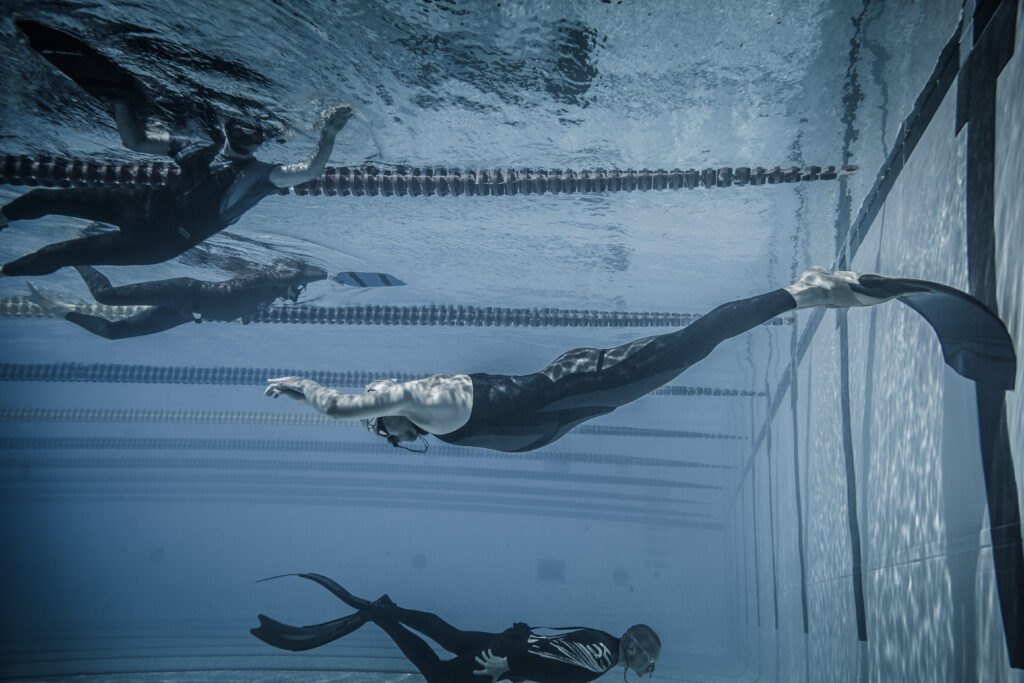The 800m freestyle sits in a challenging middle ground between sprint and distance events, demanding both speed and endurance whilst requiring precise energy management throughout the race. Many swimmers struggle with this event because they either start too fast and fade dramatically, or swim too conservatively and finish with energy left unused. The key to successful 800m freestyle racing lies in developing consistent pacing skills through structured training that builds both aerobic capacity and speed endurance.
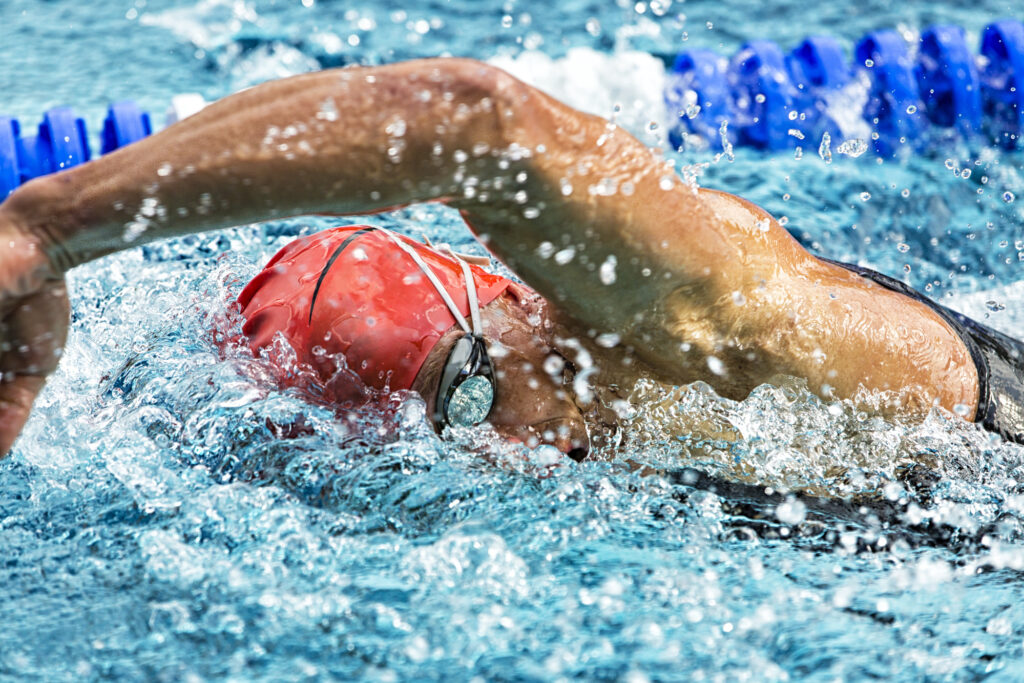
Pacing strategies for distance swimming become crucial when swimmers need to maintain their goal pace across 32 lengths of the pool. Unlike shorter events where swimmers can rely purely on speed, the 800m requires a tactical approach that balances aggressive racing with sustainable effort. The difference between a breakthrough performance and a disappointing result often comes down to how well a swimmer has trained their pacing instincts.
Developing effective 800m pacing requires a systematic approach that combines aerobic base building, speed work, and race-specific training sets. Swimmers must learn to recognise their sustainable race pace, develop the fitness to maintain it, and build the confidence to execute their strategy under race conditions. This comprehensive training approach addresses technique efficiency, energy system development, and the mental skills needed to execute a successful race plan.
Key Takeaways
- Successful 800m freestyle racing requires balanced training that develops both aerobic endurance and speed endurance capabilities
- Swimmers must practice race-pace training sets regularly to develop instinctive pacing skills and sustainable speed
- Monitoring training progress through timed sets and technique work helps swimmers refine their race strategy and execution
Understanding the 800m Freestyle Race
The 800m freestyle presents unique challenges that require swimmers to balance speed with endurance whilst managing energy distribution across 32 lengths of a 25m pool. Strategic pacing decisions and understanding the event’s physical demands are essential for optimal performance.
Event Structure and Requirements
The 800m freestyle spans 32 lengths in a standard 25m pool or 16 lengths in a 50m pool. Swimmers must complete the distance using freestyle technique, with turns at each wall requiring proper touch and push-off execution.
The event typically lasts between 8-16 minutes for competitive swimmers. Elite swimmers like Zane Grothe complete the distance in under 8 minutes, whilst recreational swimmers may take 12-16 minutes.
Energy systems play a crucial role in this distance. The 800m relies heavily on aerobic capacity whilst requiring anaerobic power for tactical moves and finishing speed.
Key physiological demands include:
- 70-80% aerobic energy contribution
- 20-30% anaerobic energy contribution
- Sustained stroke technique under fatigue
- Mental focus for extended duration
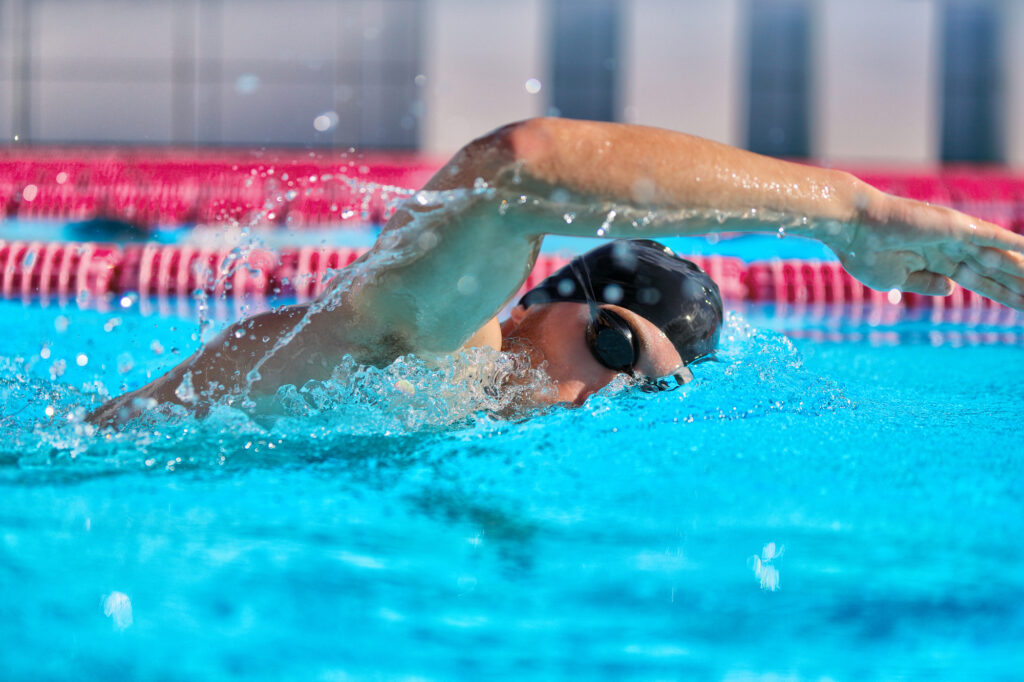
Common Pacing Challenges
Many swimmers struggle with pacing consistency throughout the 800m distance. Poor pacing often results from swimming too conservatively early on, leaving unused energy at the finish.
Primary pacing errors include:
- Going out too fast and fading dramatically
- Swimming too slowly initially and failing to utilise full potential
- Inconsistent 100m split times
- Poor tactical awareness during races
Swimmers frequently misjudge their energy reserves. They either exhaust themselves in the first 400m or maintain such a conservative pace that they finish without accessing their anaerobic capacity.
Training with specific pace work helps swimmers develop better race awareness. Practising different pacing strategies during training builds confidence and physiological adaptations needed for optimal race execution.
Core Principles of Effective Pacing
Successful 800m freestyle pacing relies on precise split time planning and maintaining steady rhythm throughout the race. These two elements work together to prevent early fatigue whilst ensuring swimmers have energy for a strong finish.
Establishing Target Split Times
Swimmers must calculate their goal splits before entering the pool. The most effective approach divides the target time into 50m or 100m segments.
For a 10-minute 800m swim, each 100m should average 1 minute 15 seconds. This creates a clear benchmark for every length.
Split Time Planning:
- First 400m: Swim 2-3 seconds faster than goal pace
- Middle 200m: Hold steady at goal pace
- Final 200m: Push 1-2 seconds faster if energy remains
Elite swimmers often use negative splitting. They swim the second half slightly faster than the first half. This strategy prevents oxygen debt in early laps.
Swimmers should practice their target splits during training. Time trials help establish realistic goals based on current fitness levels.
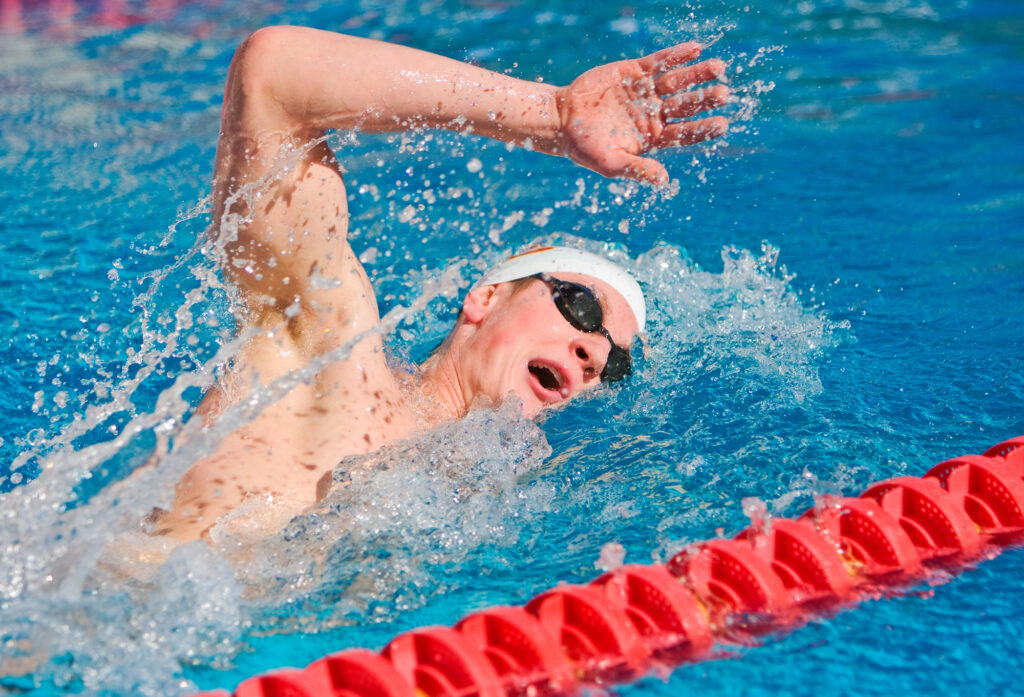
Sustaining Consistent Lap Pace
Maintaining steady rhythm requires strong stroke technique and breathing control. Swimmers who start too fast typically fade dramatically in the final 200m.
Key Rhythm Elements:
- Stroke rate between 28-32 strokes per minute
- Bilateral breathing every 3-5 strokes
- Consistent wall push-offs and turns
Lap counters or pace clocks help swimmers monitor their progress. Checking splits every 100m allows for small adjustments without major rhythm changes.
Training for 800m pacing should include tempo sets at race pace. Swimming 4x200m at goal pace with short rest builds pacing muscle memory.
Swimmers must resist the urge to sprint early when adrenaline peaks. Controlled aggression in the final quarter produces better results than explosive starts.
Training Approaches for 800m Freestyle Pacing
Effective 800m freestyle pacing requires structured training that develops both aerobic capacity and speed endurance. Swimmers need specific workout types that teach proper race distribution and energy management throughout the event.
Interval Training for Distance
Distance interval training forms the foundation of 800m freestyle preparation. These sets teach swimmers to maintain consistent splits whilst building the aerobic base needed for the event.
Speed sets designed to improve 800m performance include structured intervals like 8 x 100m holding under 1:35 on 2:00 rest. This type of training develops the ability to repeat target pace efforts.
Key interval sets for 800m training:
- 16 x 50m freestyle (3 fast at 45 seconds, 1 easy on longer rest)
- 6 x 100m on 1:45 holding race pace plus 3-5 seconds
- 4 x 200m on 3:30 at race pace for middle 600m
The rest intervals should allow partial recovery. Swimmers should feel challenged but able to maintain technique and target times throughout the set.
Progressive interval training helps swimmers learn negative splitting. Start with slightly slower times and gradually increase pace through the set to simulate race strategy.
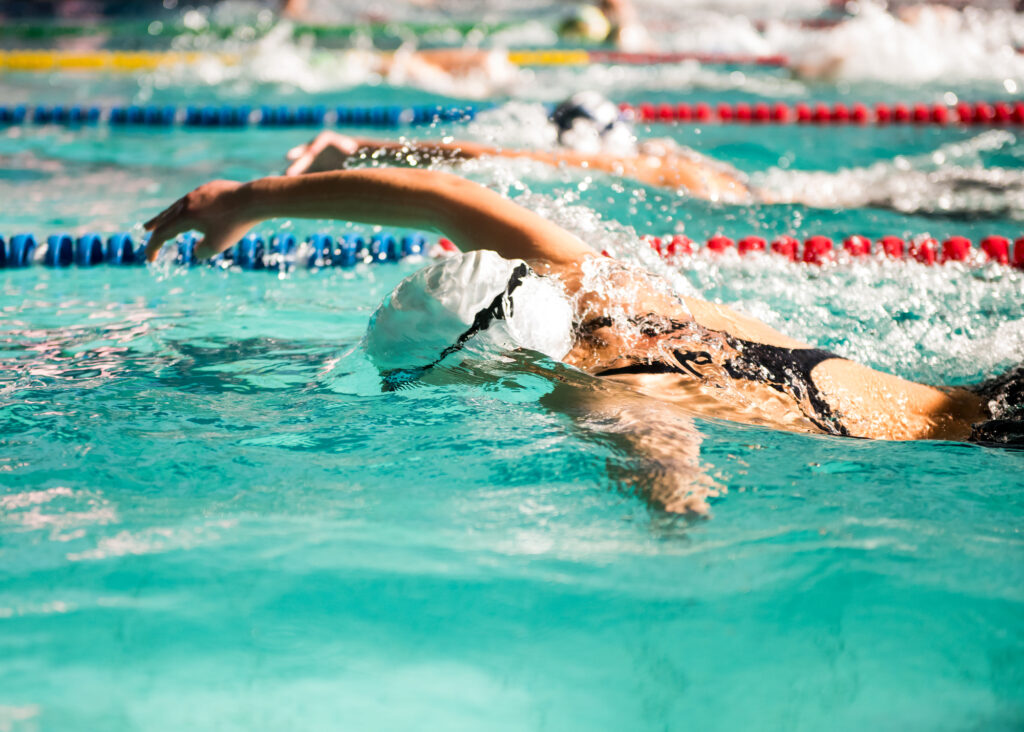
Broken 800m Sets
Broken 800m sets allow swimmers to practice race pacing with short recovery periods. These workouts simulate race conditions whilst providing brief rest to maintain quality.
A typical broken 800m might be 200m + 200m + 200m + 200m with 10-15 seconds rest between each segment. Swimmers aim to hit their goal race splits for each 200m portion.
Effective broken set structures:
- 4 x 200m with 10 seconds rest (race pace simulation)
- 2 x 400m with 20 seconds rest (building endurance)
- 8 x 100m with 5 seconds rest (speed endurance focus)
These sets help swimmers understand how their body responds to sustained pace efforts. The brief rest prevents complete recovery, mimicking the continuous nature of racing.
Broken sets also allow coaches to provide split feedback during the swim. This immediate information helps swimmers adjust their pacing strategy.
Incorporating Tempo and Endurance Workouts
Tempo workouts develop the specific energy systems used in 800m freestyle racing. These moderate-intensity efforts build sustainable speed over the race distance.
Tempo sets typically involve swimming at 85-90% of race pace for extended distances. A 1000m swim at tempo pace builds the aerobic power needed for consistent 800m pacing.
Tempo workout examples:
- 3 x 400m at 85% effort with 45 seconds rest
- 1 x 800m steady swim at tempo pace
- 5 x 200m building from tempo to race pace
Endurance workouts complement tempo training by developing the aerobic base. Longer, easier swims improve the body’s ability to clear lactate during racing.
Multi-pace training approaches within short training cycles help develop various energy systems. This method trains swimmers at different intensities over 7-14 day periods.
Base endurance sets might include 3000-4000m continuous swimming at comfortable effort. These longer swims build the cardiovascular fitness essential for 800m success.
Technique Optimisation for Long-Distance Freestyle
Proper stroke mechanics, body alignment, and breathing patterns form the foundation for maintaining speed whilst conserving energy throughout an 800m race. These technical elements work together to reduce drag and maximise propulsion over the demanding middle-distance event.
Efficient Stroke Mechanics
The catch phase requires precise timing and positioning to generate maximum propulsion. Swimmers should enter the water with fingertips first, extending the arm fully forward before beginning the catch.
Hand Position: Keep fingers slightly separated (2-3mm gaps) to create a larger surface area. The hand should be pitched at 40-45 degrees during the catch phase.
Elbow Position: Maintain a high elbow throughout the pull phase. The elbow should stay higher than the hand until the arm passes beneath the shoulder.
The pull pattern follows an S-curve motion underwater. This path allows swimmers to grab fresh water continuously rather than pulling through disturbed water.
Stroke Rate Considerations:
- Early race: 28-32 strokes per minute
- Middle 400m: 30-34 strokes per minute
- Final 200m: 32-36 strokes per minute
Recovery should be relaxed with the elbow leading the movement. A tense recovery wastes energy that could be used for propulsion during longer races.
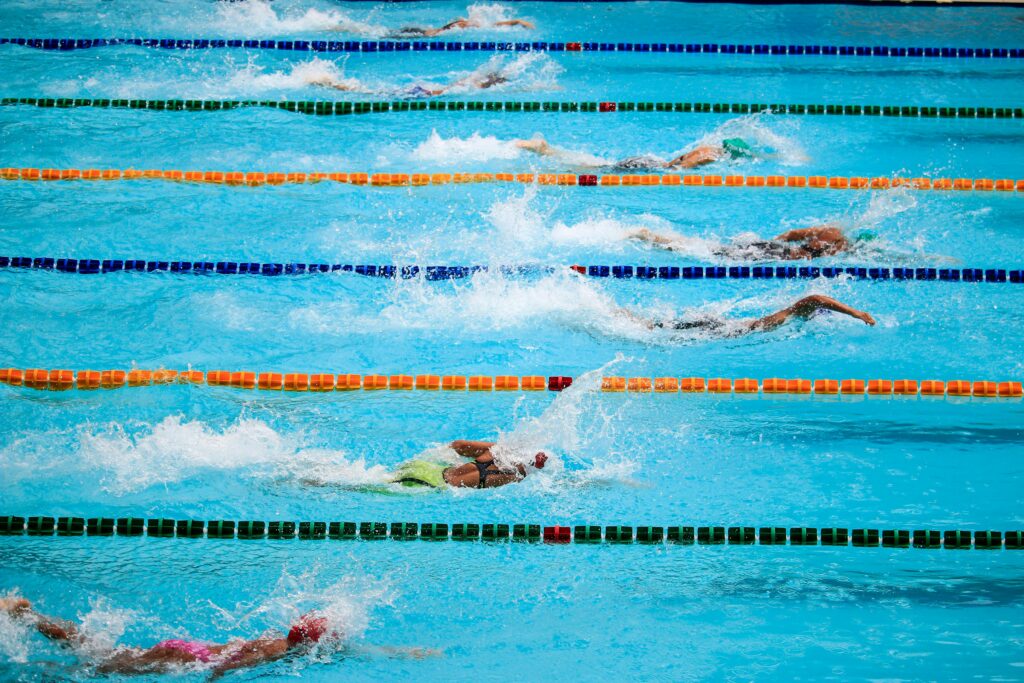
Refining Body Position
Horizontal body alignment reduces drag significantly during distance swimming events. The head position controls the entire body’s alignment in the water.
Head Position: Eyes should look straight down with the waterline hitting mid-forehead. Lifting the head even slightly causes the hips to drop and increases drag.
Hip Position: Hips should ride high near the surface. Engaging core muscles helps maintain this position throughout the race distance.
The body should rotate 30-45 degrees on each stroke. This rotation engages larger muscle groups and reduces shoulder strain over 800 metres.
Key Alignment Points:
- Head neutral and still
- Shoulders level during rotation
- Hips near surface
- Legs straight and streamlined
Kick amplitude should remain small (12-15cm) to conserve energy. The kick primarily maintains body position rather than providing significant propulsion in distance events.
Breathing Strategies for Endurance
Bilateral breathing (every three strokes) provides balanced stroke development and better oxygen intake. This pattern becomes crucial for maintaining technique over 800 metres.
Breathing Frequency: Most distance swimmers breathe every 2-3 strokes depending on their oxygen needs and race pace.
The breathing should be quick and efficient. Swimmers should exhale continuously underwater through nose and mouth to ensure complete air exchange.
Breathing Technique Steps:
- Begin turning head as arm enters water
- Inhale quickly when mouth clears surface
- Return head to neutral before arm recovery
- Exhale steadily underwater
During faster portions of the race, some swimmers reduce breathing frequency to every 4-5 strokes. However, this should only be maintained for short distances to avoid oxygen debt.
Consistent breathing rhythm helps maintain stroke timing. Proper breathing patterns support both technique and pacing throughout the demanding 800m distance.
Developing Speed and Endurance
Successful 800m freestyle training requires building a strong aerobic base whilst incorporating high-intensity speed work to develop the necessary physiological adaptations. Swimmers must balance aerobic fitness training with speed-focused sets to achieve optimal race performance.
Building Aerobic Capacity
Aerobic capacity forms the foundation of distance swimming performance. Swimmers need extensive aerobic training to maintain pace throughout the entire 800m race distance.
The most effective aerobic sets range from 1200m to 1600m total distance. These longer training sets develop the cardiovascular system’s ability to deliver oxygen efficiently to working muscles.
Key Aerobic Training Sets:
- 6 x 200m freestyle on 3:45 rest intervals
- 4 x 400m freestyle at steady aerobic pace
- 8 x 150m freestyle with descending intervals
- 2000m continuous swim at moderate intensity
Swimmers should maintain consistent stroke technique throughout these longer sets. Breathing patterns become crucial during aerobic training – bilateral breathing every three strokes helps maintain oxygen supply.
Heart rate monitoring helps ensure training occurs within the correct aerobic zone. Most swimmers should target 70-80% of maximum heart rate during these endurance-focused sessions.
Integrating 100m Freestyle Sets
Speed development requires specific training at race pace and faster intensities. Short sprint sets develop the anaerobic power needed for strong race finishes and tactical moves.
100m freestyle sets provide the ideal distance for developing speed whilst maintaining stroke technique. These sets bridge the gap between pure sprint work and longer aerobic training.
Effective 100m Training Progressions:
- 8 x 100m freestyle on 1:30 (building speed each 25m)
- 6 x 100m freestyle on 2:00 (alternating easy/fast)
- 4 x 100m freestyle on 3:00 (at 800m race pace)
- 10 x 100m freestyle descending 1-5, then repeat
Swimmers should focus on maintaining turnover rate during these faster sets. Stroke count consistency indicates proper technique maintenance at higher speeds.
Recovery intervals between 100m repeats allow for quality execution. Adequate rest ensures each repeat can be completed at the target intensity without technique breakdown.
Monitoring and Adjusting Your Training Progress
Tracking pace times with digital tools and reviewing training data helps swimmers identify improvement patterns and adjust their 800m programme. Consistent monitoring prevents overtraining whilst ensuring adequate progression towards race goals.
Using Pace Calculators and Timing Tools
Digital stopwatches provide the most accurate timing for training intervals. Swimmers should record split times for each 100m during longer sets to track consistency.
Pace calculators help determine target times for different training intensities. For 800m training, swimmers need pace times for 90-95% effort and 95-105% race pace intervals.
Timing apps can store historical data and calculate averages. Popular options include:
- SwimPB – tracks personal bests and progression
- MySwimPro – offers pace calculations and workout logging
- Stopwatch apps with lap timing features
Heart rate monitors provide additional data about training intensity. Swimmers can identify when they’re working too hard or not hard enough during aerobic sets.
Tempo trainers help maintain consistent stroke rates during pace work. Set the beeper to match your target stroke rate for race simulation training.
Record times immediately after each set whilst they’re fresh in memory. Keep a training log with dates, distances, times, and how the swimmer felt during each session.
Analysing Training Data
Weekly time comparisons show whether the swimmer is improving consistently. Look for gradual decreases in times for similar training sets over 2-3 week periods.
Split analysis reveals pacing problems during longer swims. If 100m splits vary by more than 3-4 seconds during 800m training, work on more even pacing.
Training load tracking prevents overtraining. Monitor total weekly distance and intensity levels. Reduce volume if times start getting slower despite consistent effort.
Recovery indicators include morning heart rate and perceived effort levels. Higher than normal resting heart rate may signal the need for easier training days.
Plateau identification occurs when times stop improving for 3-4 weeks. This indicates the need to change training stimulus through different interval distances or intensities.
Create simple charts showing weekly average times for key training sets. This visual data helps identify trends that might not be obvious from individual session notes.
Applying Pacing Lessons from Open Water Swimming
Open water swimmers develop superior energy management skills through extended training that translates directly to 800m freestyle racing. These athletes master the art of maintaining steady effort levels whilst adapting to changing conditions throughout longer distances.
Managing Energy in Extended Distances
Open water swimming teaches crucial endurance pacing skills that directly benefit 800m freestyle swimmers. Open water athletes regularly swim 1,500m to 10,000m+ distances, developing exceptional energy distribution abilities.
The key lesson involves maintaining consistent effort rather than consistent pace. Open water swimmers learn to hold steady exertion levels despite environmental challenges like currents or waves.
For 800m training, swimmers can adopt this approach by focusing on perceived effort rather than split times during practice sets. This develops internal pacing awareness that proves invaluable during competition.
Energy Conservation Techniques:
- Maintain relaxed shoulders during middle 400m
- Control breathing rhythm throughout the race
- Avoid sudden pace surges that waste glycogen stores
- Practice negative splitting in training sets
Distance swimming events require swimmers to distribute energy across extended periods. This skill directly applies to 800m racing, where early pace mistakes compound dramatically over the remaining distance.
Translating Open Water Strategies to the Pool
Open water swimmers excel at tactical pacing adjustments that 800m swimmers can adapt for pool racing. These athletes learn to modify their pace based on race dynamics and competitor positioning.
The concept of pack swimming from open water translates to following competitors’ pace in the 800m. Open water swimmers practice maintaining position within groups whilst conserving energy through drafting techniques.
Pool swimmers can apply this by:
- Staying close to lane leaders during middle 400m
- Matching stroke rates rather than fighting the pace
- Saving energy for strategic moves in final 200m
Open water training emphasises structured interval work rather than just long, slow swimming. This approach builds both aerobic capacity and speed endurance essential for 800m success.
Tactical Applications:
- Practice swimming at various paces within single sessions
- Develop ability to surge and settle back to race pace
- Train negative splitting through progressive build sets
- Master the skill of accelerating without losing stroke efficiency
Open water swimmers’ ability to maintain faster paces in unpredictable conditions develops mental toughness that proves invaluable during challenging 800m races.

